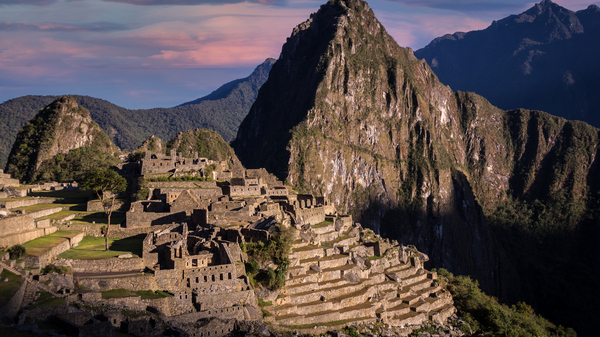A Once-In-A-Thousand-Years Eclipse
The partial lunar eclipse on November 19, 2021 was the longest since the 15th century, around the time Machu Picchu was being built.

From the previous time a partial lunar eclipse lasted more than six hours.
©iStockphoto.com/julianpetersphotography
Near-Perfect Alignment
Between 06:02 and 12:03 UTC on November 19, 2021, the Sun, Earth, and Moon came into near-perfect alignment and produced a partial lunar eclipse.
At the maximum point of the eclipse—at 09:02 UTC—99 percent of the Moon’s face was covered by the dark inner part of Earth’s shadow, called the umbra.
The remaining sliver of the lunar disk was deep within the lighter, outer part of Earth’s shadow, known as the penumbra.

The partial lunar eclipse of November 2021 was almost a total eclipse.
©timeanddate.com
Unusually Long
The overall duration of the November 2021 eclipse—from the moment the Moon entered Earth’s penumbra, to the moment it left—was around 21,693 seconds (about 6 hours 2 minutes).
For a non-total lunar eclipse—in other words, a lunar eclipse that only has penumbral and partial phases—this was an unusually long duration.
The previous time a partial lunar eclipse was this long was on February 18, 1440. That was around the time the Incas were building the city of Machu Picchu in South America.
The next time a partial lunar eclipse reaches this overall length will be on February 8, 2669. (This is close to the year the time-travel movie Bill & Ted’s Excellent Adventure begins!)
Why So Long?
The November 2021 partial eclipse was longer than many total lunar eclipses. For example, the overall duration of the total eclipse of May 26, 2021 was 18,127 seconds—roughly one hour less.
Why was the November 2021 eclipse so long? The maximum point of the eclipse came about 41 hours before the Moon reached apogee, its farthest point from Earth.
The farther away the Moon is, the slower it travels along its orbit, which means it takes longer to pass through Earth’s shadow.
By contrast, maximum eclipse in May 2021 occurred around 9 hours after perigee, the Moon’s closest point to Earth.
Another way of saying this is that the November eclipse involved a Micromoon, while the May eclipse featured a Supermoon.

In May 2021, the magnitude was slightly more than in November 2021 (it was a ‘deeper’ eclipse), but the overall duration was much shorter.
©timeanddate.com
Eclipses Repeat in Cycles
In the 1200 years from 1451 to 2650, there are 973 partial lunar eclipses. The top five eclipses in terms of overall duration are listed below.
Longest partial lunar eclipses from 1451 to 2650
- November 19, 2021: 21,693 sec (6 hours 2 min)
- November 30, 2039: 21,609 sec (6 hours 0 min)
- October 9, 2489: 21,557 sec (6 hours 0 min)
- December 11, 2057: 21,532 sec (5 hours 59 min)
- December 22, 2075: 21,464 sec (5 hours 58 min)
Apart from the 2489 event, the eclipses on this list are all separated by about 18 years and 11 days. This is no coincidence. Eclipses repeat—with very small differences—in a 6585-day cycle known as the Saros.
If we go back one Saros period before November 19, 2021, we arrive at November 9, 2003. The lunar eclipse that occurred on this date was almost identical, but the total duration was even longer: 21,795 seconds (6 hours 3 minutes).
Why does it not show on our list above? Because the Sun-Earth-Moon alignment was a fraction more perfect than in November 2021; the result was a total lunar eclipse, not a partial one.

The period of ‘totality’ during the November 2003 total eclipse was a fairly brief 1307 seconds (22 minutes).
©timeanddate.com